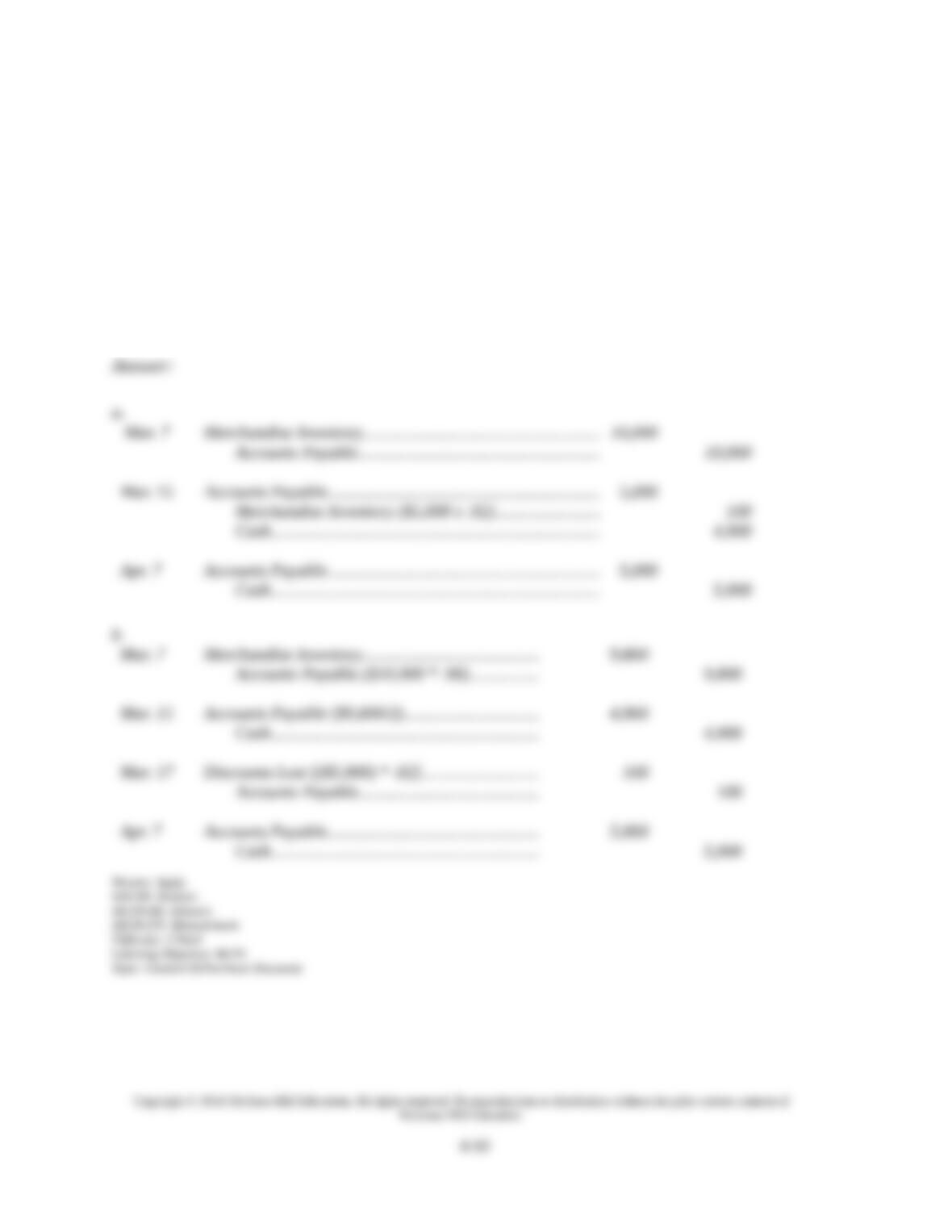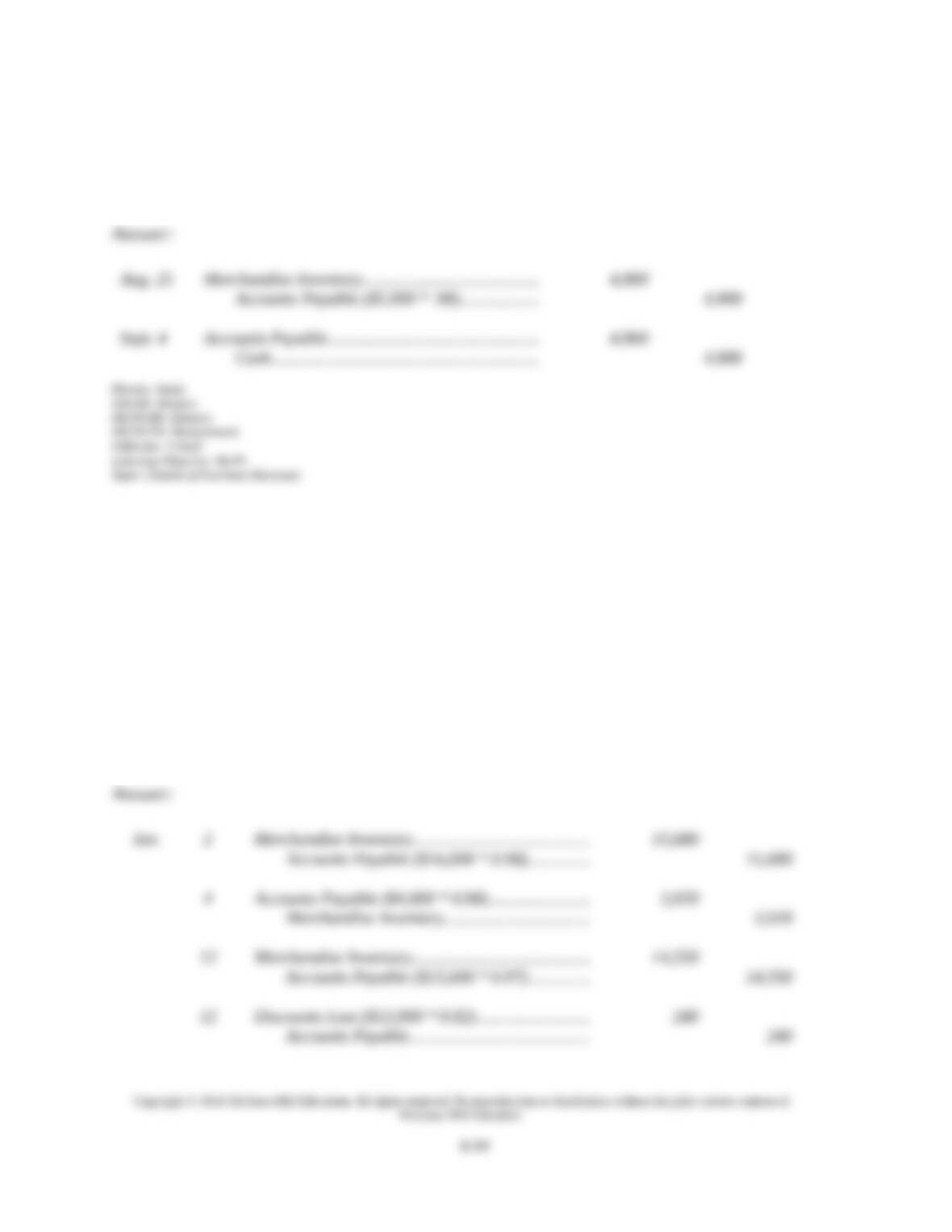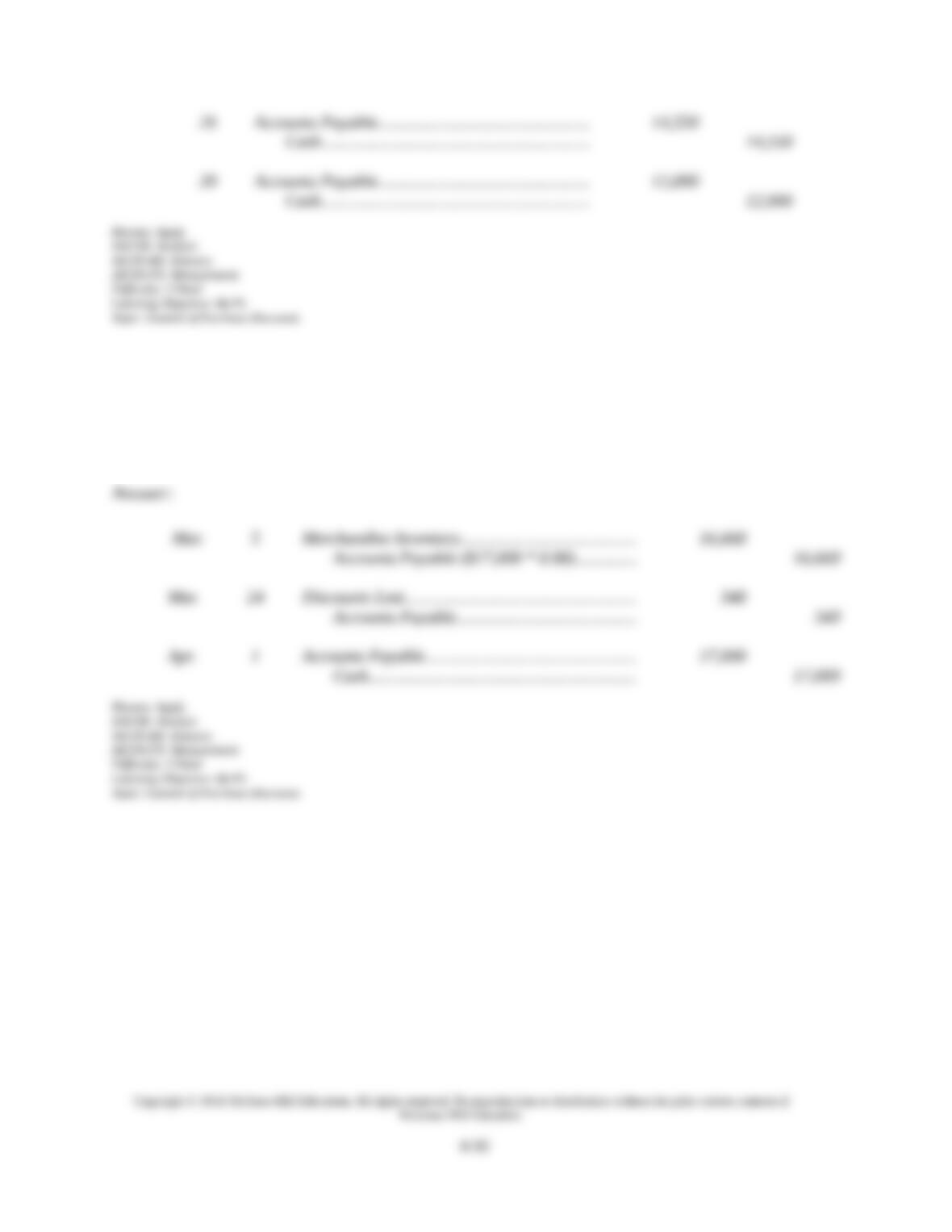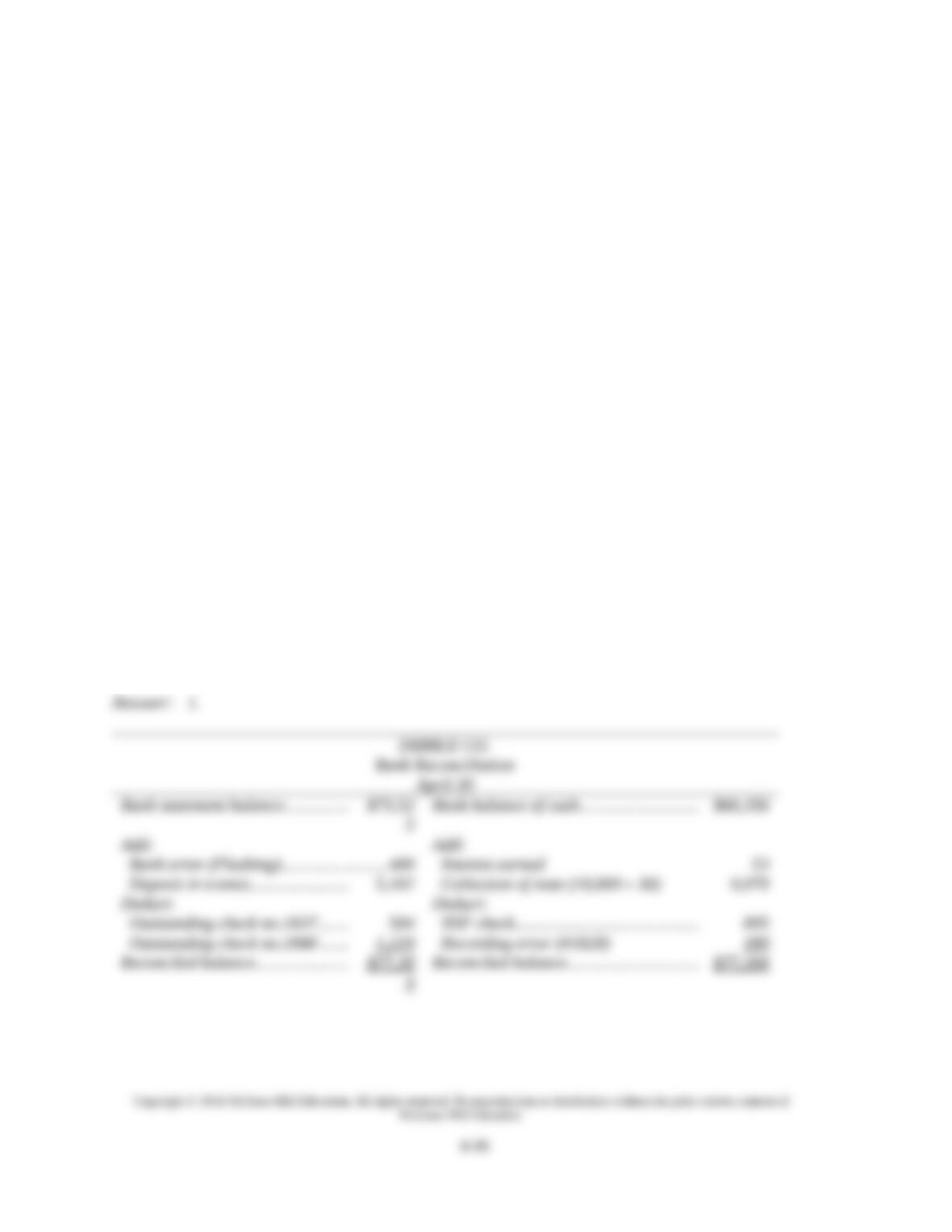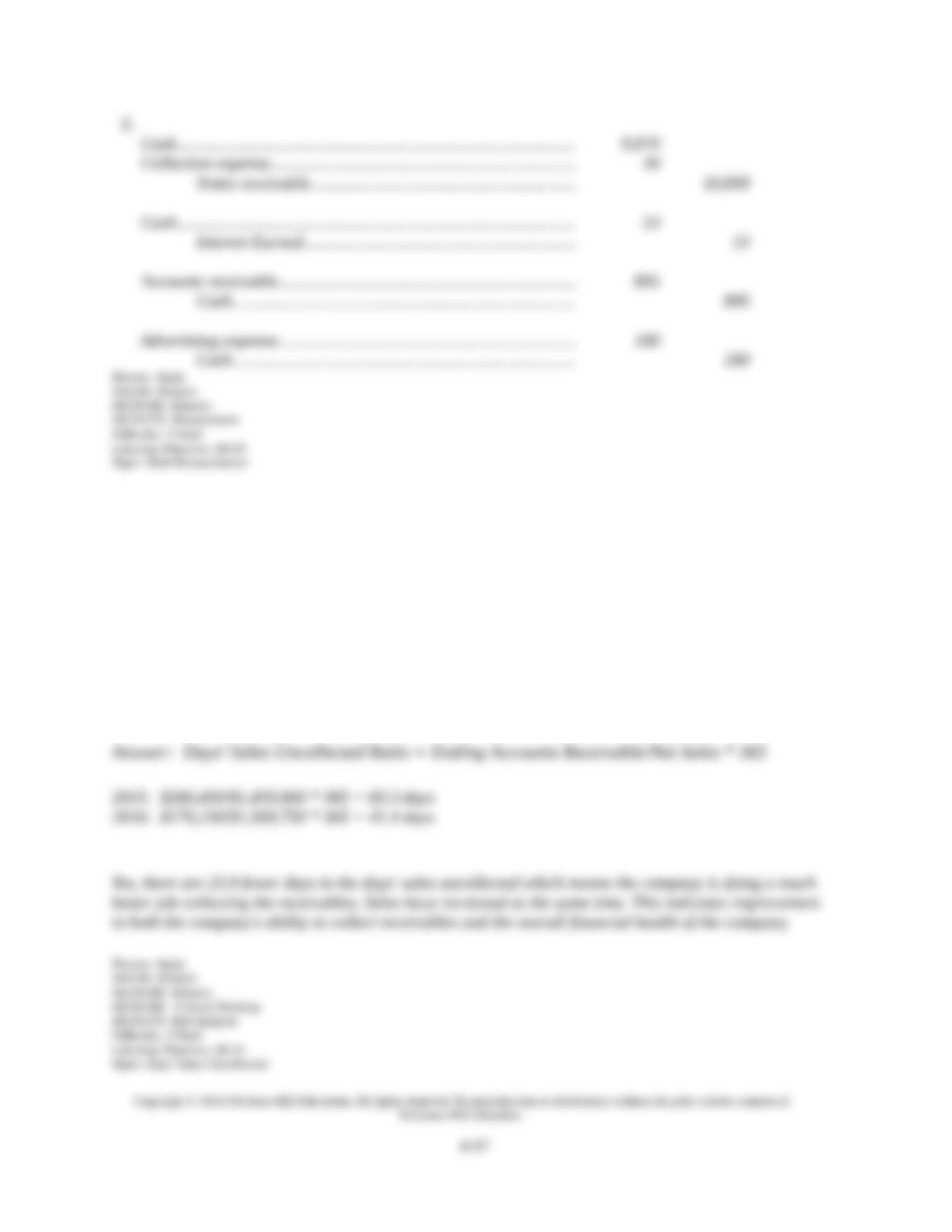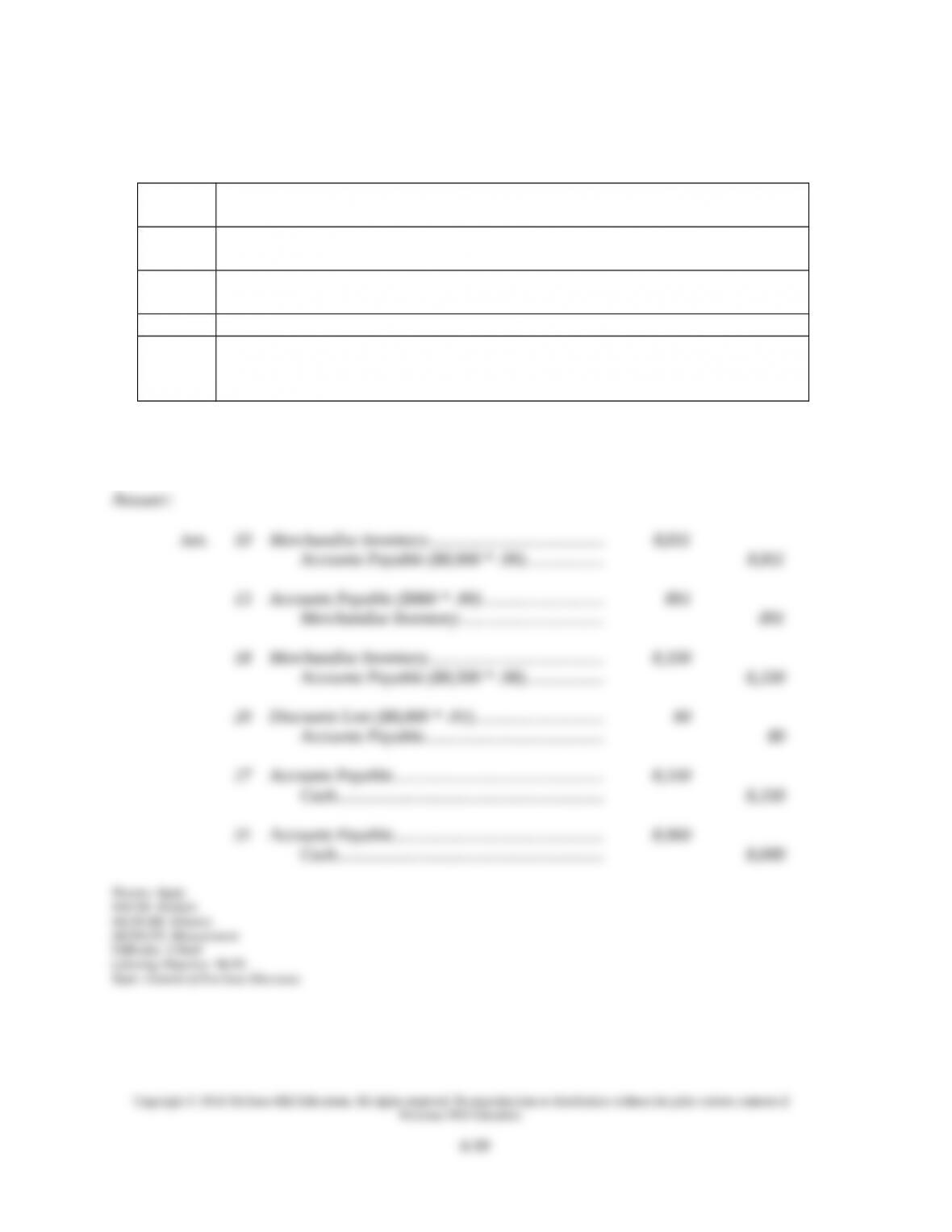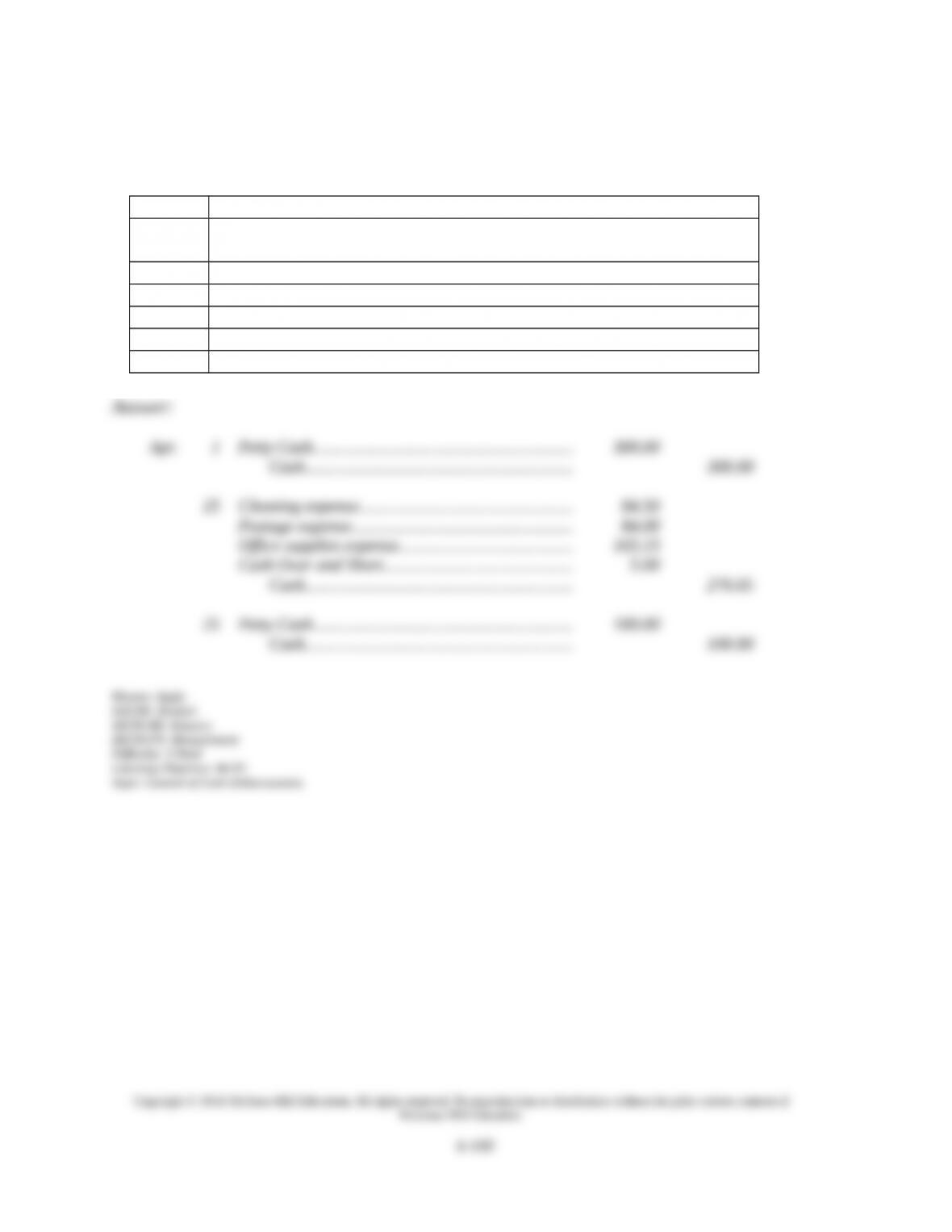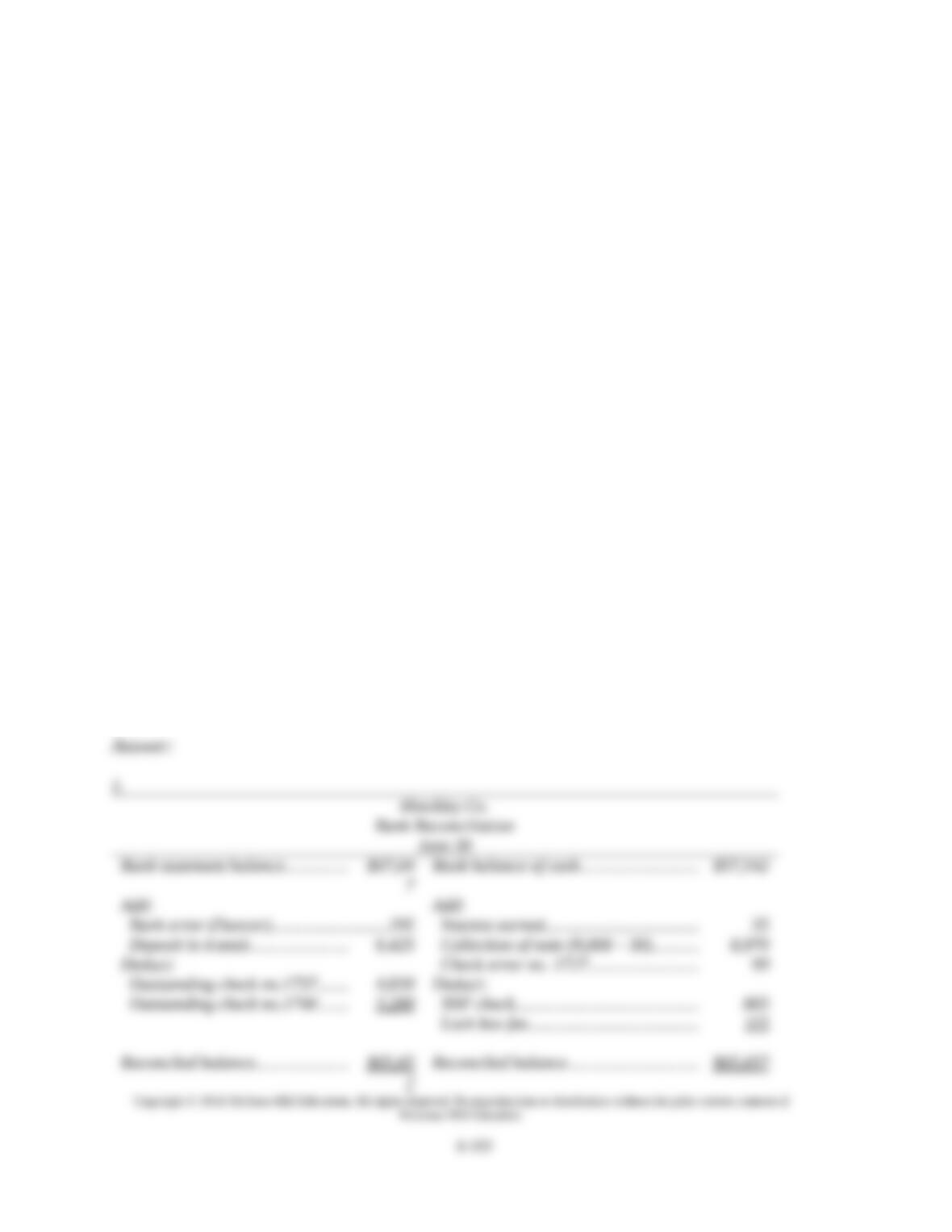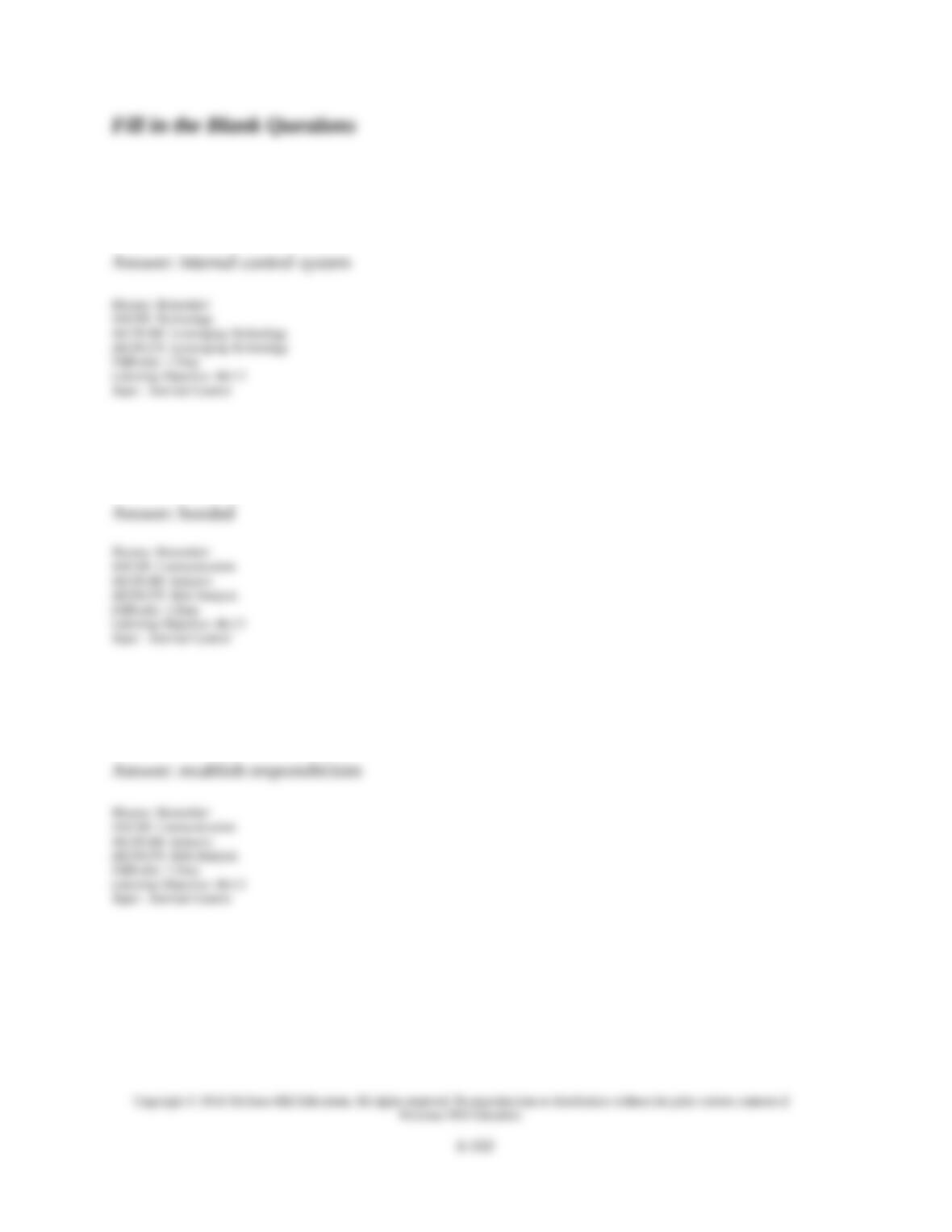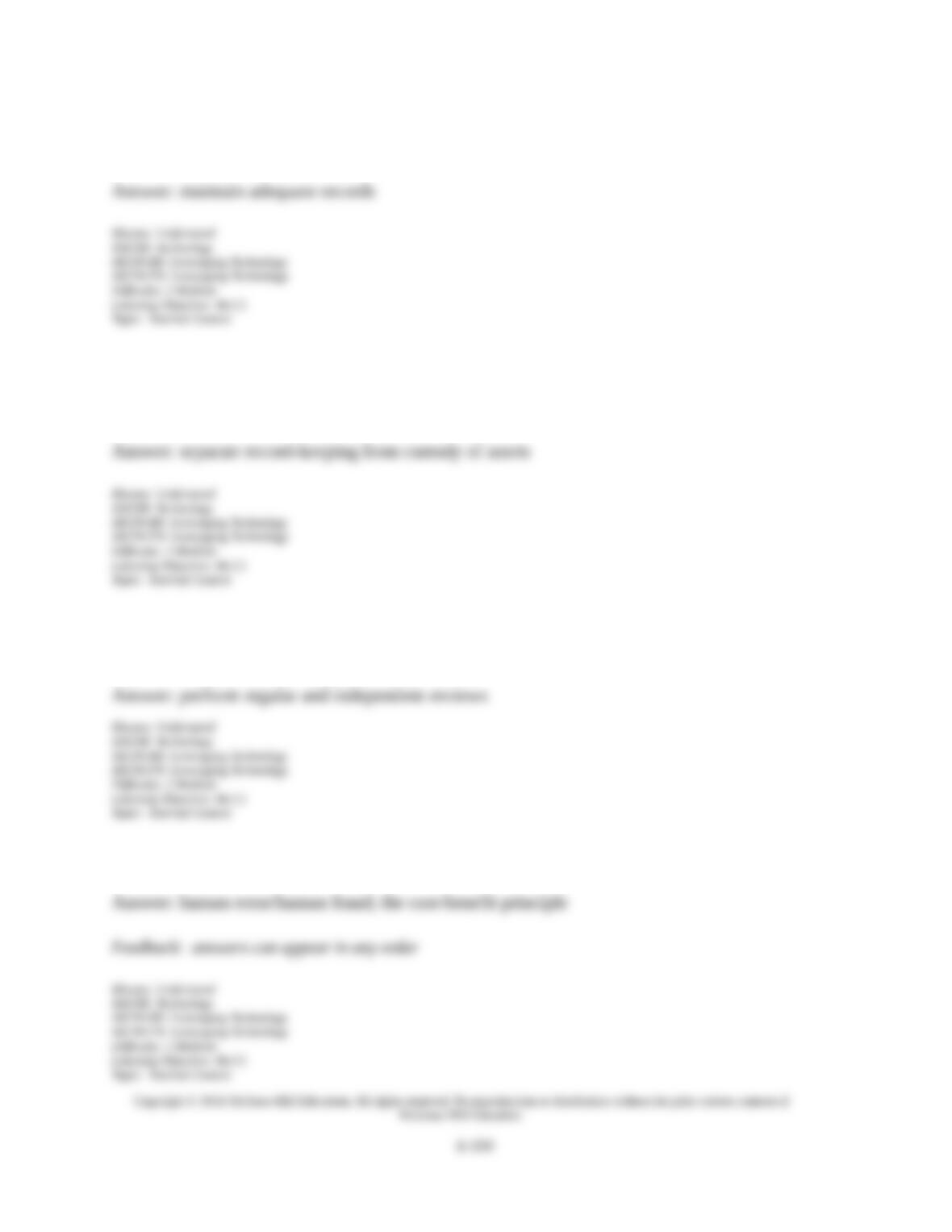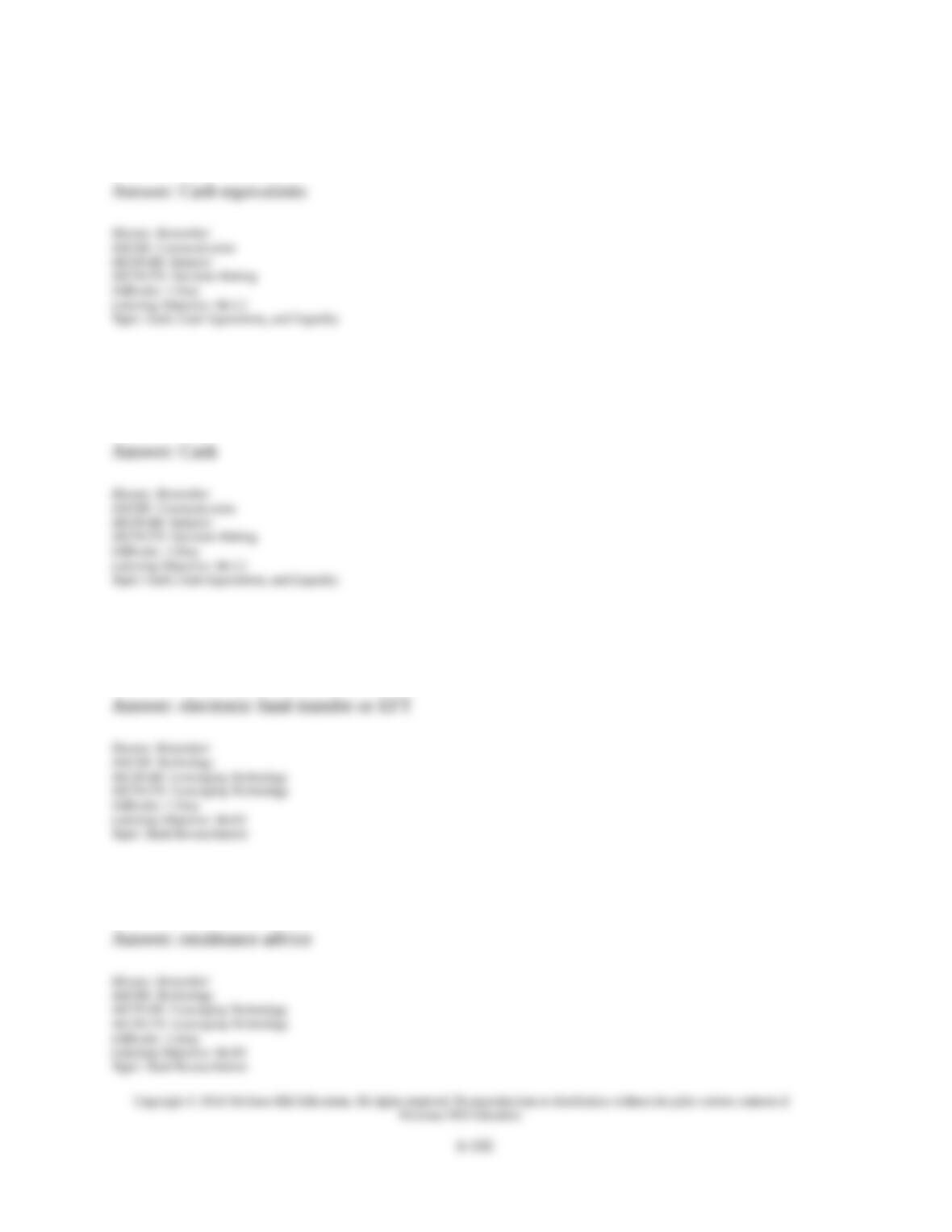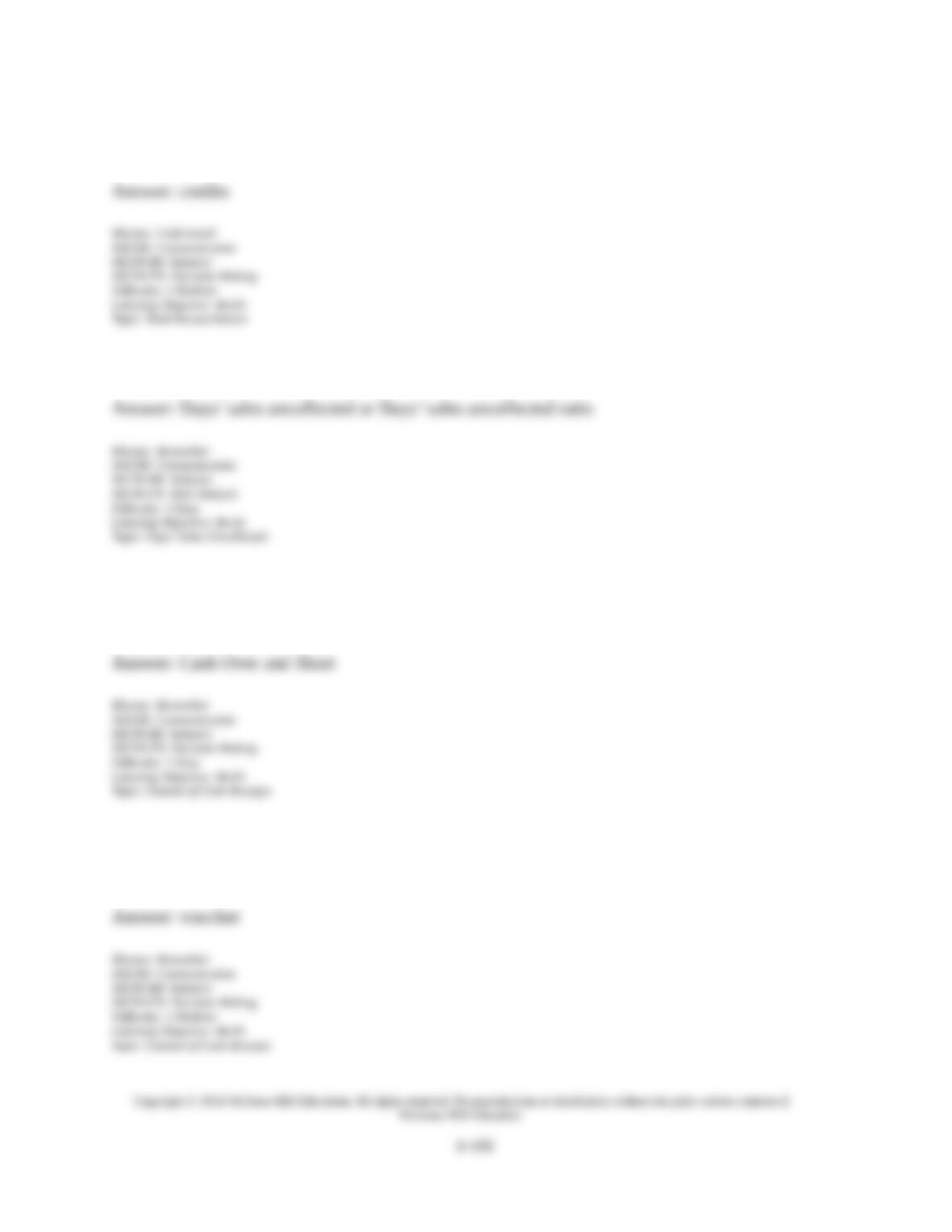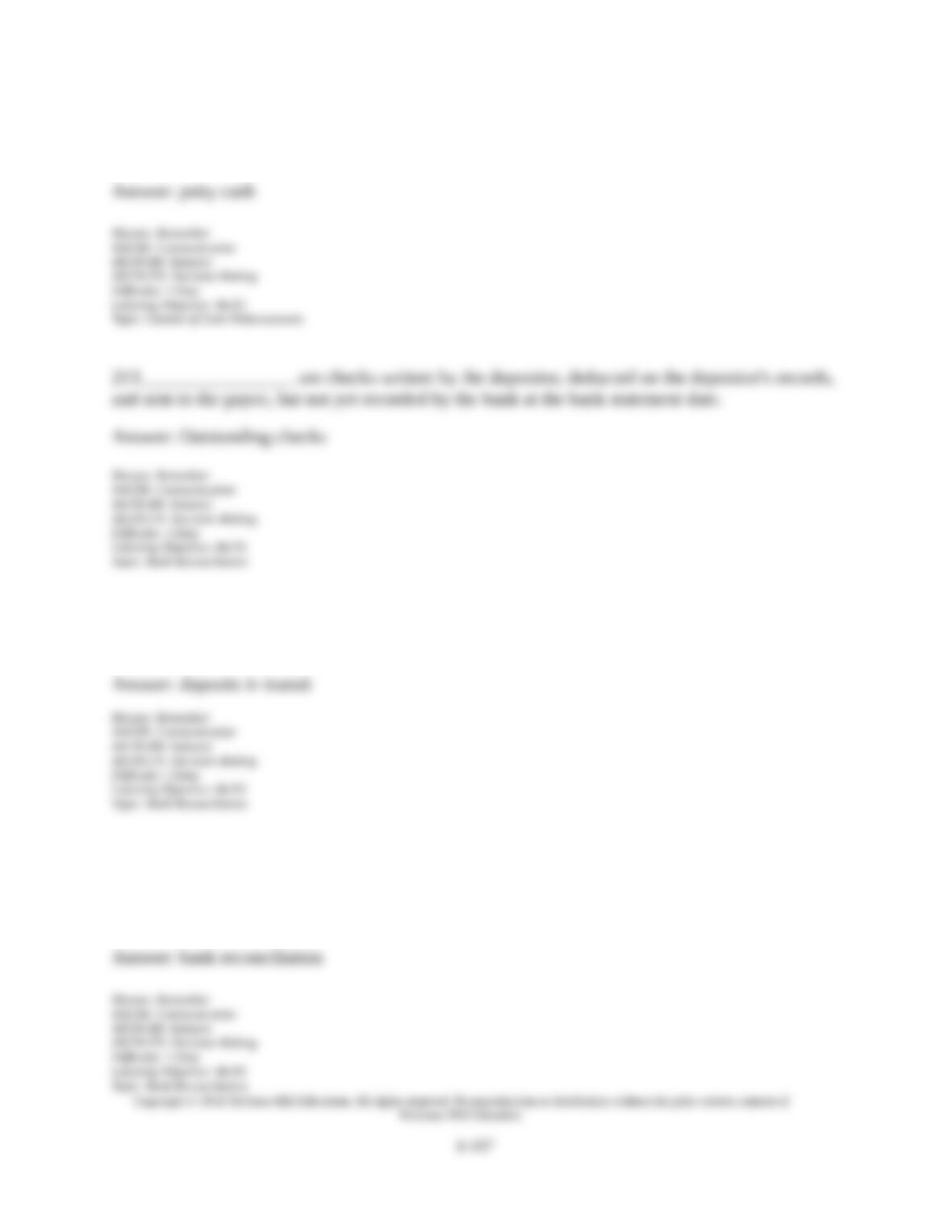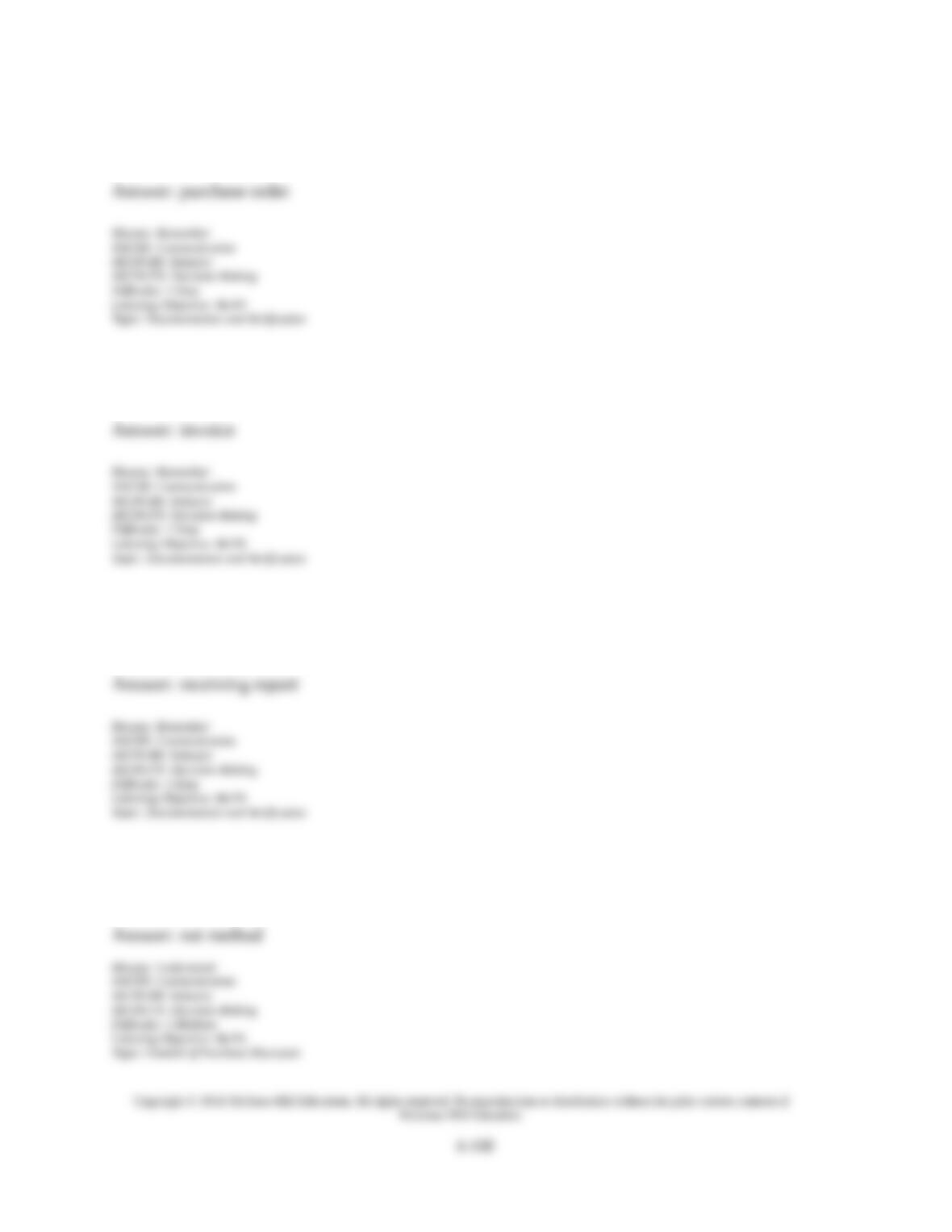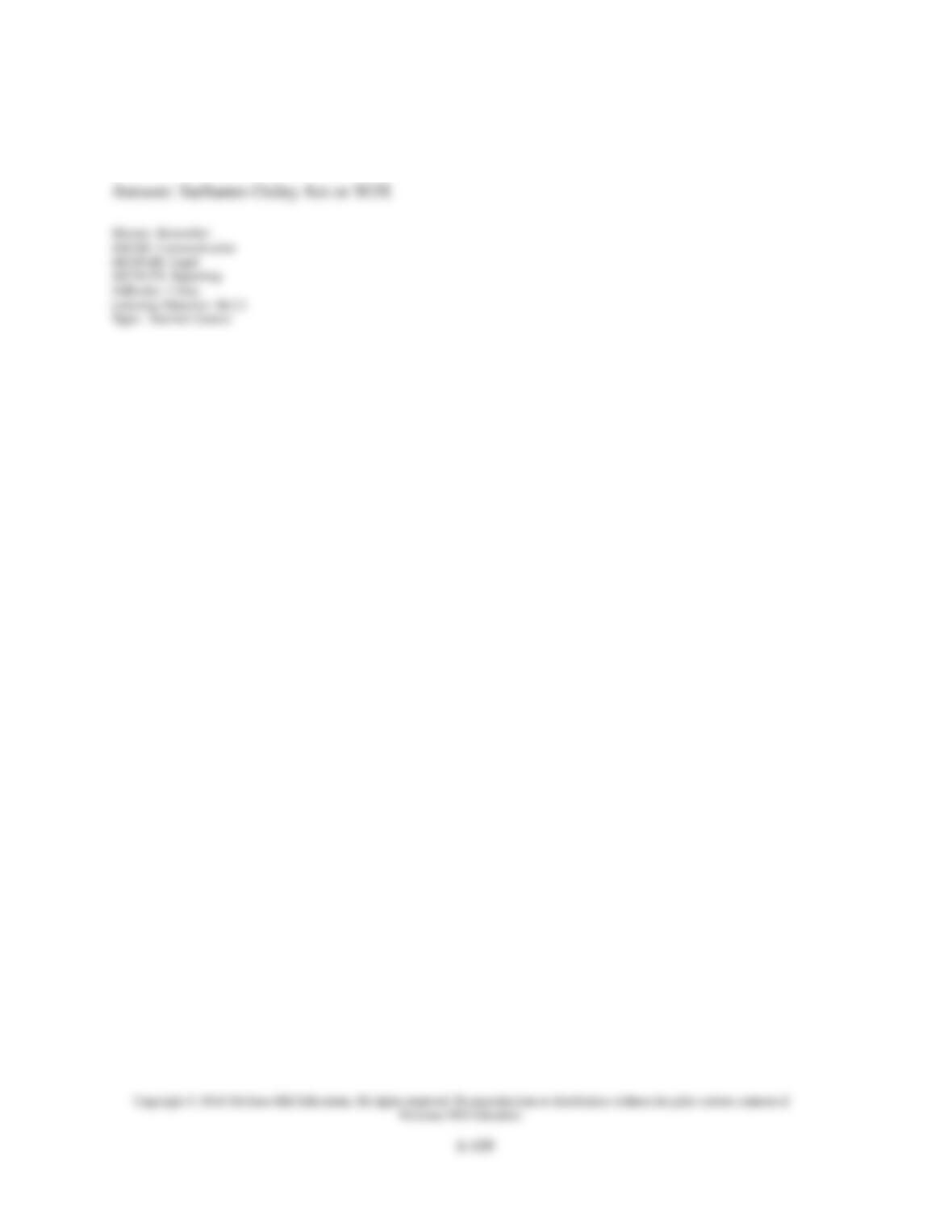170. For each of the independent cases below, identify the principle of internal control that is
violated, and recommend what should be done to remedy the violation.
1. In order to save money, Indigo Company has decided to drop its property insurance on assets;
and stop bonding the cashiers who handle upwards of $5,000 in cash each day.
2. Jobs Company records each sale on a preprinted invoice. Because invoices are sometimes
damaged in the process of preparation, the invoices are not prenumbered. Instead, the sales clerk
writes the next number on each invoice as it is prepared.
3. Keegan Company is a very small business. Dylan Epps, one of the two office clerks, opens
the mail each day and removes the cash receipts that come in the mail. Dylan also records the
receipts in the cash records and the customer's account and deposits the cash in the bank.
4. Ludwig Company prides itself on hiring only the most competent employees. The owner,
Jeremy Ludwig, believes that since the employees are highly competent he can show he trusts
them completely by not checking up on their performance.
5. Maple Industries is a small business with three accounting employees. Each employee is well-
trained and able to perform any of the accounting tasks, including handling cash receipts and
cash disbursements, and preparing the bank reconciliation. Because of this cross-training, the
employees share responsibilities for all of the tasks.
1. Insure assets and bond key employees. Even though it may save money in the short run, insurance
protects the company if assets are stolen. Bonding reduces the risk of loss from the theft of cash by
employees. It also discourages theft because bonded employees know that an independent company will
be involved when a theft is discovered. It is unlikely that the bonding company will be sympathetic to any
employee involved in the theft.
2. Maintain adequate records. All important documents, including sales invoices, should be pre-
numbered. This will help ensure that all sales are recorded and that salespeople cannot pocket cash from
a sale and destroy the sales invoice.
3. Divide responsibility for related transactions. Dylan has too many responsibilities with respect to cash.
He controls the cash and maintains the records of cash. These responsibilities with respect to cash should
be split up among several employees. One person should open the mail (ideally with a second employee
present), and prepare a list in triplicate that indicates each sender's name, the amount sent, and an
explanation of why the money was sent. One copy goes to the cashier with the money. The cashier
deposits the money in the bank and records the amounts received in the accounting records for cash. The
second copy goes to the record keeper in the accounting area who records the amounts in the customer's
records. The third copy stays with the person who opens the mail. Dylan may carry out one of these tasks,
but not all of them.
4. Perform regular and independent reviews. Even the most competent person sometimes makes mistakes.
Sometimes individuals who appear honest may turn out not to be. Jeremy should set up regular,
independent reviews of each employee's performance to evaluate possible errors and to ensure that
procedures are followed.
5. Establish responsibilities. Each employee should be assigned specific tasks. Now, if a problem occurs,
it is difficult to know who is at fault. It is hard to hold employees accountable for their actions if it cannot
be determined who is responsible for the action.
Copyright © 2016 McGraw-Hill Education. All rights reserved. No reproduction or distribution without the prior written consent of
McGraw-Hill Education.
6-77


























































































